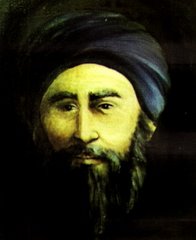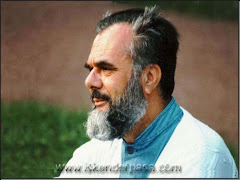Muslims take their internationalism very seriously. And perhaps no more seriously than at the time for the annual Hadj, the name given to the pilgrimage to Mecca, an ancient city located in the central-west of Saudi Arabia near the Red Sea coast.
The Hadj is considered one of the 5 pillars of Islamic practice, and is compulsory for all able-bodied Muslims who can afford the trip. It commences this weekend and lasts for around 5 days.
This year, an estimated 2.5 million pilgrims from across the globe will be attending. A number of delegations from Australia and New Zealand will also be present. They will participate in an international gathering of worship, the theme of which is the struggle of Abraham and members of his family.
The three universal monotheistic faiths (Judaism, Christianity and Islam) respect and honour Abraham as the patriarch of ethical monotheism. Where today some speak of “Judeo-Christian” values, it would perhaps be more accurate to speak of “Abrahamic” values which the three faiths share.
The Qur’anic account of Abraham is similar to the Biblical one. Abraham was born in a region roughly coinciding with modern Iraq. His father sculptured idols which were worshipped in the temples of his region. Abraham’s insistence on worshipping a single invisible God was a threat to his father’s livelihood, and Abraham was forced to leave his home town.
Islamic tradition states that Abraham had two wives. His Egyptian wife Hagar bore him a son Ishmael. Both mother and child were left in a desert wilderness known as “Bakkah”. Hagar is believed to have run between two hills in a desperate search for water for her toddler.
After her seventh sprint, Hagar found her son had uncovered a spring of fresh water. She quickly built a well, known as “Zam Zam”. That well continues to quench the thirsts of the millions of pilgrims visiting “Bakkah” (now known as Mecca).
Today, most pilgrims travel in comfort. But that hasn’t always been the case. Indeed, as one Australian pilgrim’s account of the Hadj some 80 years ago shows, pilgrims faced constant danger in what were then the lawless environs of the Arabian peninsula. The journey often took years. The relatively short trip from Jeddah to Mecca to Stegar’s caravan some 10 days.
Winifred Stegar was born in London in 1882. She and her father migrated to South Australia, and married at 17 years to one Charles Stegar, a marriage that proved miserable. Some seven years after separating and leaving her four children behind, she married the love of her life, an Indian hawker (travelling salesman) named Ali Ackba Nuby. In 1927, they both set off for pilgrimage.
Stegar’s account of her Hadj journey was published in 1969 under the title “Always Bells”, and has now been republished in an anthology of Hadj writings collected and edited by American Muslim writer Michael Wolfe and entitled “A Thousand Roads To Mecca”.
Most of Stegar’s travelling companions were from the Indian sub-Continent, many of them cameleers and hawkers that made up the majority of Australia’s largely outback Muslim community at the time. Her group travelled the last leg of the journey, from the Red Sea port of Jeddah to Mecca, in a caravan of camels. The illness of many pilgrims was compounded by their insistence on fasting during the last leg of the trip.
“Most of our Indian pilgrims were very old; some even tottered on crutches and sticks. We all knew that hundreds of our company would not return again to their homeland, and many of them did not even wish to, for they deemed themselves doubly fortunate if their weary bodies could lie down in eternal rest in this, their Holy of Holies.
“So very many were weak and ill, coughing their lungs away, but still deep in the rheumy old eyes was the glint of a peace their souls longed for, a gleam of joy at something at last attempted but yet by no means done.”
For many pilgrims, th Hadj represented their only opportunity to set their affairs right with God. In many Muslim cultures, Hadj is one of the last acts of devotion a person will fulfil. For Muslims from the Indian sub-Continent, who make up around a quarter of all Muslims, the Hadj is generally not performed until children have grown up and married.
Muslims believe that the reward for a Hadj accepted by God is nothing short of Paradise. The Hadj and its hardships represent a person’s personal sacrifice to achieve salvation. All sins are washed away. This fact has generated numerous jokes and sarcastic remarks, such as the Urdu saying: “After eating several thousand mice, the cat finally decides to set off for Hadj!”
On the other hand, a precondition for going on Hadj is that a person has paid off all their debts. With this in mind, Malay and Indonesian pilgrims tend to be young adults and couples who perform the Hadj before taking on major financial commitments.
Muslims also travel to the Prophet’s grave, located in the chamber of his wife Aishah and located in the city of Medina (some 200 km north of Mecca). The grave is today contained in his mosque, and is covered by a green dome. Pilgrims experience first-hand the aura and spiritual presence of the man they regard as God’s final messenger to humanity. It is not uncommon to see pilgrims break into tears of love and longing upon setting sight on the green dome.
Much more can be said on the subject. Entire volumes have been devoted just to commentaries on the Qur’anic verses dealing with the Hadj. For anyone seeking personal accounts, perhaps the best and most moving is contained toward the end of the Autobiography of Malcolm X. There is also Michael Wolfe’s own personal account which is well worth reading and readily available in most libraries.
© Irfan Yusuf 2005











1 comment:
very interesting article, i look forward to reading more of your stuff.
Post a Comment